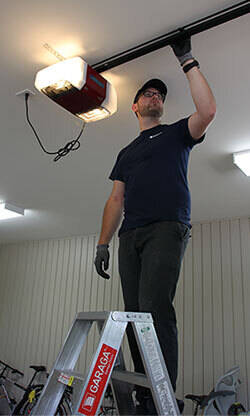
Introduction:
Maintaining your garage door opener is essential for its longevity and efficient operation. A DIY approach to cleaning and maintenance not only saves you money but also ensures that your garage door functions smoothly. Let’s explore some crucial tips for cleaning and maintaining your garage door opener.
Inspecting for Wear and Tear:
Regular inspections are the first line of defense in garage door opener maintenance. Check for any visible signs of wear and tear on the opener, including frayed wires, loose screws, or damaged components. Addressing these issues promptly prevents further damage and extends the lifespan of your garage door opener.
Lubricating Moving Parts:
Proper lubrication is crucial for the smooth functioning of your garage door opener. Apply a silicone-based lubricant to the moving parts such as rollers, hinges, and chains. Be sure to follow the manufacturer’s recommendations for the type of lubricant to use. Lubrication reduces friction, minimizes wear, and ensures quieter operation.
Cleaning Sensors and Safety Features:
Garage door openers are equipped with safety sensors to prevent accidents. Regularly clean the sensors and ensure they are properly aligned. Dust and debris can obstruct the sensor’s functionality, leading to malfunctions. Keep the sensor area clear to ensure the safe and reliable operation of your garage door.
Tightening Hardware Connections:
Vibrations from daily use can cause nuts and bolts to loosen over time. Periodically check and tighten all hardware connections, including brackets, screws, and bolts. This simple step prevents the risk of components coming loose, reducing the potential for more significant issues.
Testing Balance and Alignment:
An imbalanced or misaligned garage door can strain the opener and lead to premature wear. Test the balance of your garage door by disconnecting the opener and manually lifting the door. It should move smoothly and stay in place when partially opened. If there are issues, consult the owner’s manual for guidance on adjustments.
Cleaning the Exterior:
The exterior of your garage door opener can accumulate dirt and dust, affecting its performance. Clean the exterior casing with a damp cloth to remove any buildup. Avoid using harsh chemicals that may damage the finish. A clean exterior not only enhances the appearance but also contributes to the overall health of your garage door opener.
Checking the Auto-Reverse Feature:
The auto-reverse feature is a crucial safety component in garage door openers. Test this feature monthly by placing an object, like a piece of wood, in the door’s path. If the door does not reverse upon contact, it’s time to inspect and potentially replace the sensors or adjust the force settings according to the manufacturer’s guidelines.
Inspecting the Drive System:
Depending on your garage door opener type, it may use a chain, belt, or screw drive system. Regularly inspect the drive system for signs of wear or damage. Lubricate as needed and address any issues promptly. A well-maintained drive system ensures the smooth operation of your garage door.
Reviewing the Owner’s Manual:
The owner’s manual is a valuable resource for understanding your specific garage door opener model. It provides guidance on maintenance tasks, troubleshooting common issues, and safety instructions. Take the time to review the manual periodically to stay informed and address any emerging concerns.
Conclusion – DIY Garage Door Opener Care:
Regular DIY maintenance is key to a well-functioning garage door opener. From lubricating moving parts to inspecting safety features, these tips empower homeowners to keep their garage doors operating efficiently. Remember, a well-maintained garage door opener enhances the safety, security, and convenience of your home.
For detailed guidance on cleaning and maintaining a garage door opener yourself, visit Clean and Maintain a Garage Door Opener DIY.










